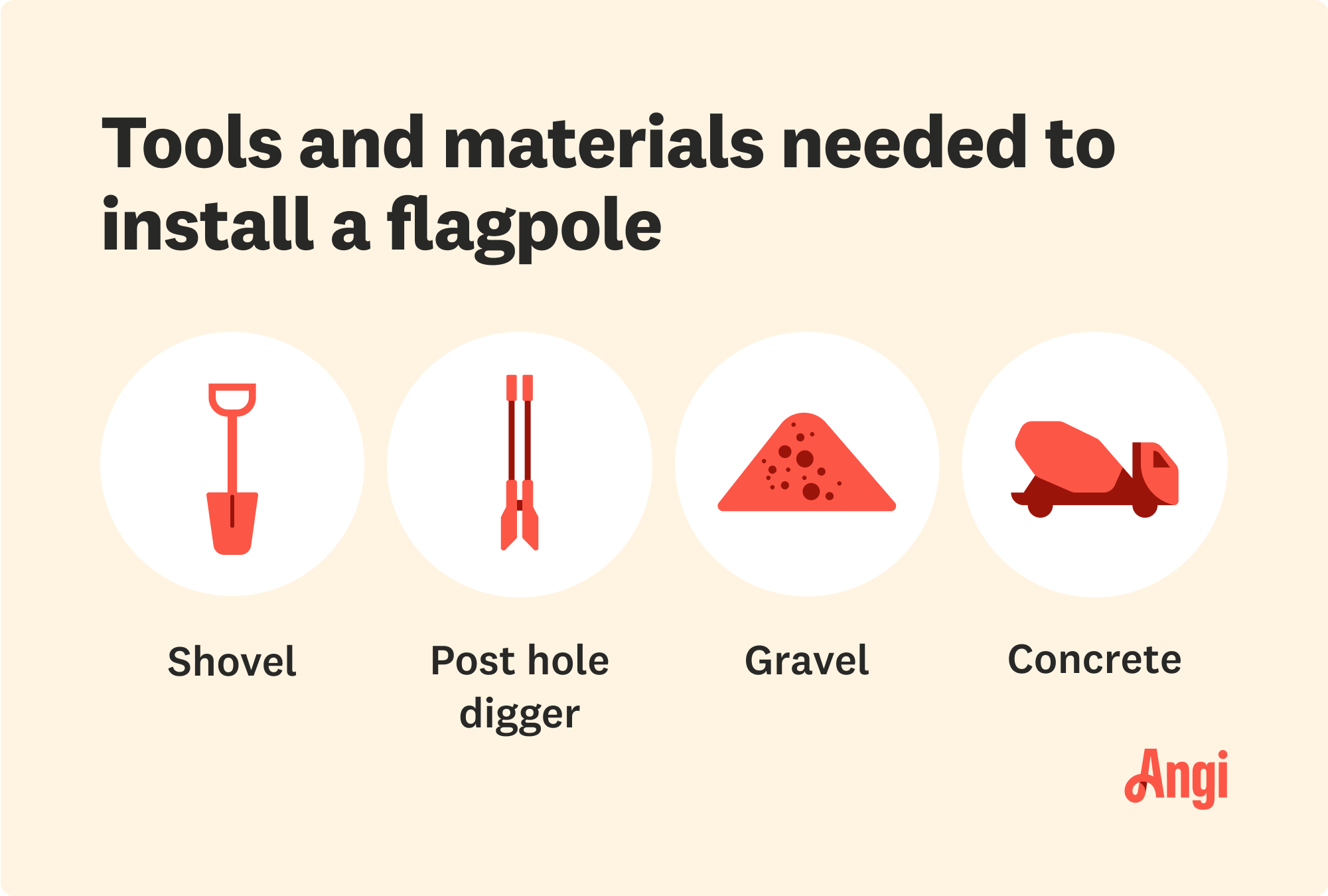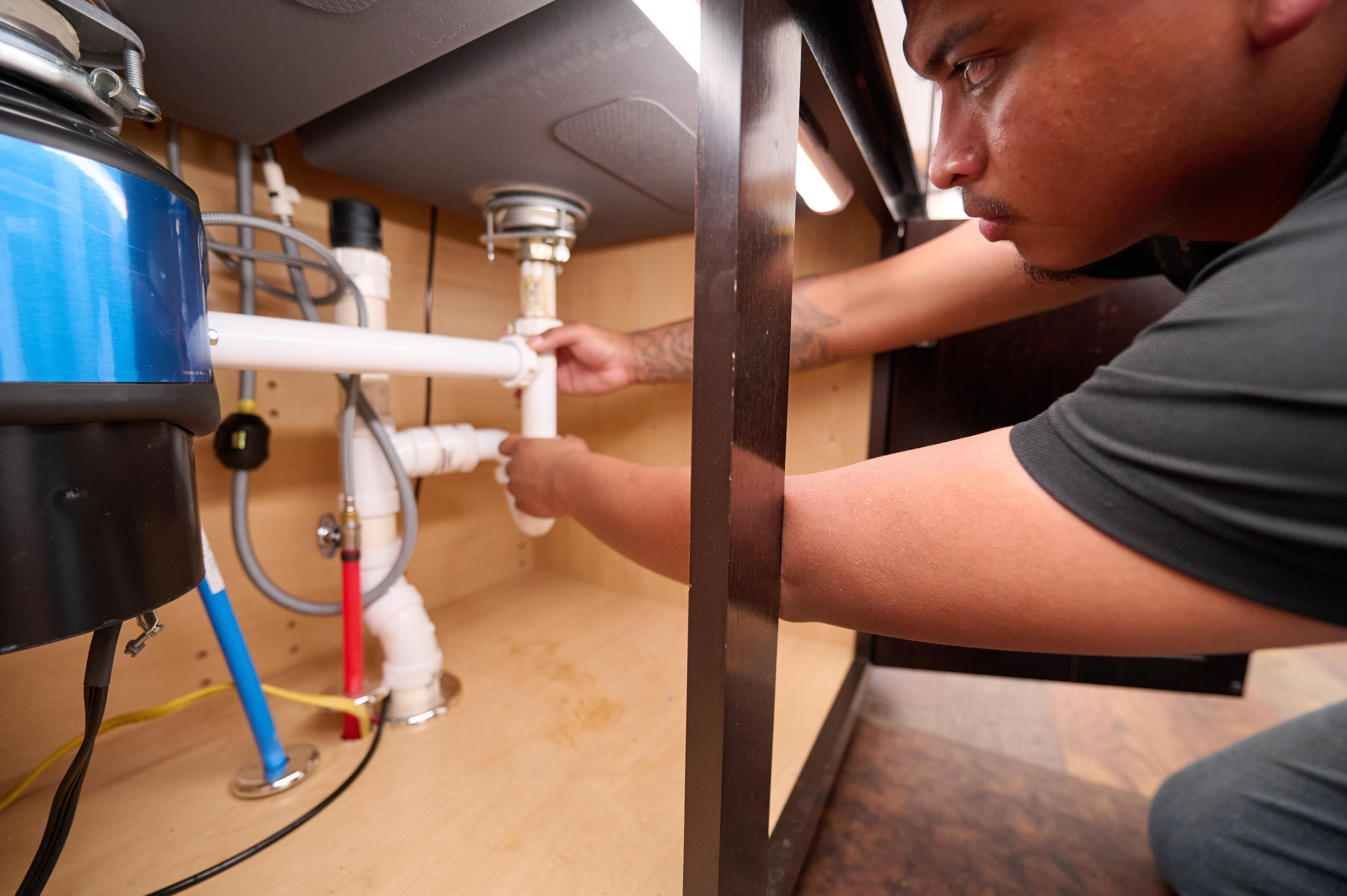
Find out how much it costs to build a chicken coop—whether you've got a few hens in your backyard or a big, self-sustaining flock—with our expert guide.
Handyman service costs depend on your project and location. Check with a local pro for your specific job.
A typical flagpole installation in the ground will cost $200 to $800 for materials and labor.
Custom-made wooden flagpoles can cost as much as $7,000.
Expect labor costs for a flagpole installation to be 50% to 80% of the total price.
Adding a light to illuminate the flag at night can cost an additional $100 to $400.
Custom flagpole designs and adequate lighting could slightly boost your home’s resale value.
The average cost to install a flagpole is $850, but you could pay as little as $65 for a small, wall-mounted flagpole or as much as $7,000 for a custom wooden flagpole made from an exotic wood, like teak. Most projects fall between $400 and $1,000.
There are a few key things to consider in order to get an accurate estimate for your flagpole installation project.
The type of flagpole you install is the most significant cost factor. Something as simple as a wall-mounted flagpole will cost $65. A standard metal flagpole set in the ground will cost an average of $850 and can range from $200 up to $800, depending on the type and thickness of the metal and the height of the pole. A custom wooden flagpole adds the most to your curb appeal, but these cost $5,000, on average, and can range from $3,500 up to $7,000.
| Type of Flagpole | Installation Cost |
|---|---|
| Wall-mounted | $75–$220 |
| Fixed metal | $200–$800 |
| Telescopic | $300–$1,000 |
| Commercial | $800–$1,200 |
| Wooden | $3,500–$7,000 |

The materials for your flagpole installation will account for between 20% and 50% of your installation costs, or between $30 and $3,500, depending on the type of flagpole you want. Aluminum is a long-lasting material that will come with the lowest material costs. Steel will cost more but is also more durable and lasts longer.
Wood is the most expensive flagpole material, mostly because the height of a standard flagpole requires that an expert cut the pole from a single trunk that’s 20 to 30 feet tall. Wooden flagpoles require special tools and are often only available from dedicated craftspeople, so they can cost $3,500 or more for the materials alone.
Labor will account for the remaining 50% to 80% of your total, or between $450 and $700, on average. These labor costs include delivery, assembly, and either mounting your flagpole to an exterior wall or digging a hole and setting the flagpole in concrete. As such, labor costs are highest for flagpoles set in the ground.
Your material, delivery, and installation costs will depend on your flagpole's height, with taller flagpoles costing more in all three areas.
Standard flagpoles are 20 feet tall and cost an average of $850 to install. Residential flagpoles that are 30 feet tall can increase costs by 10% to 15%. Commercial flagpoles are normally around 50 feet tall and can reach up to 100 feet or more. Longer flagpoles for commercial properties can increase material and installation costs by 50% to 80%.
Where you live will play a role in your flagpole installation costs, as well. Labor charges vary based on your local cost of living, and the permit fees for flagpole installation will also range based on what your local municipality charges. The table below includes average pricing based on the cost of living by state, which predominantly affects labor costs.
| State | Installation Cost |
|---|---|
| California | $1,230 |
| Florida | $870 |
| Georgia | $780 |
| Illinois | $810 |
| Michigan | $780 |
| New York | $1,050 |
| North Carolina | $830 |
| Ohio | $810 |
| Pennsylvania | $810 |
| Texas | $790 |
Permits for flagpole installation cost between $50 and $250. The actual cost will depend on your local municipality and the fee schedule your building department uses. You’ll need a permit for most flagpole installations, especially if the pole is 20 feet tall or more. You don’t need a permit for a wall-mounted flagpole.
Some professionals will be familiar with local zoning regulations and will include the permit cost in your estimate. Check with your professional before hiring if you should budget separately.
Even if you happen to have the right equipment for installing a flagpole, the realities of the job are often bigger than you might expect. A qualified handyperson service near you can handle the heavy lifting and concrete work so the pole doesn’t lean or loosen over time. Hiring a pro saves you from having to haul materials like pea gravel, mix and pour concrete, troubleshoot alignment, and make sure the installation is safe and to code.
Setting a new flagpole requires far more than simply digging a hole, so call a pro who can handle these tasks:
Pros with flagpole installation experience know how to create a stable footing so the pole doesn’t shift or tilt.
A handyperson has the tools and knowledge to dig to the proper depth and mix the concrete based on the pole height and wind exposure.
Installers set flagpoles perfectly level and straight.
They ensure ropes, hardware, lighting, and other features operate smoothly.
Pros are familiar with local codes regarding digging, placement, height limits, and utility clearance.
Homeowners can help with preparation and cleanup, but setting the pole is best left to a pro.
Mark the installation area and clear landscaping
Call 811 to check for underground utilities
Ask your handyperson if you can purchase the pole and accessories before the installation
Verify the correct positioning before your pro sets the pole
Assist with cleanup
While you’re setting aside a budget for flagpole installation, you should consider the following add-on services to add even more to your curb appeal and get the most out of the project.
Cost to install exterior lighting for the flag: $100–$400
Cost to install landscape curbing: $780–$2,100
Cost to install hardscaping: $5,000–$18,000
Tree removal cost: $200–$2,000
Cost to install flower beds: $800–$3,000
Cost to install landscape lighting: $2,000–$6,000
Flagpole installation costs can vary from very affordable to extremely expensive. Here are a few tips to keep your total as low as possible.
Choose the flagpole material carefully. Aluminum flagpoles cost $450 for the materials, while a custom wooden flagpole can push material costs up to $3,500 or more. Pick the most affordable material that suits the rest of your landscaping to keep installation costs to a minimum.
Consider DIYing. Most DIYers can tackle flagpole installation with some planning and patience, and you’ll save an average of $400 on labor if you do. Do the work yourself if you’re comfortable to save.
Keep flagpole height to a minimum. Flagpole materials, the installation labor, and permit costs all increase with the height of your flagpole. Stick with the standard 20- to 25-foot flagpole to avoid upcharges for greater heights.
Choose an affordable lighting solution. You can save some money on your flagpole illumination by opting for a solar or battery-powered light rather than trenching and hiring an electrician for a hardwired light.
Call before you dig. Hitting an underground utility line—even if it’s a small sprinkler line—can turn an affordable project into a very expensive and invasive one. Contact Call-Before-You-Dig to ensure the area you’re excavating is clear.
Select the pole height and material that best suits your preferences—popular options include aluminum, fiberglass, and steel.
Ask whether the soil type will affect the footing depth.
Let your handyperson know about strong winds or open exposure.
Decide whether you want add-ons like exterior lighting, landscaping, or hardscaping near the pole.
Confirm that the installation location avoids utilities, HOA issues, or sight lines.
Home is the most important place on earth, which is why Angi has helped more than 150 million homeowners transform their houses into homes they adore. To help homeowners with their next project, Angi provides readers with the most accurate cost data and upholds strict editorial standards. We extensively research project costs to develop the pricing data you see, so you can make the best decisions for you and your home. We rely on reputable sources, including the U.S. Bureau of Labor Statistics, academic journals, market studies, and interviews with industry experts—all to ensure our prices reflect real-world projects.
Want to help us improve our cost data? Send us a recent project quote to [email protected]. Quotes and personal information will not be shared publicly.
From average costs to expert advice, get all the answers you need to get your job done.

Find out how much it costs to build a chicken coop—whether you've got a few hens in your backyard or a big, self-sustaining flock—with our expert guide.

Learn how much it costs to board up a window to buy yourself some time and maintain home security while you wait for the permanent repair.

Wondering about the cost to hire a handyman? Discover prices, key cost factors, and money-saving tips to help you plan your next home project.

Before starting a project, it’s important to decide whether you buy or rent tools. The best option will depend on what you’re doing and the project magnitude.

You may be ready for fall, but is your home? Use this fall home maintenance checklist to prepare your home and yard for the changing seasons.

Have a home repair problem? A highly rated handyman service shares 4 easy DIY tricks you can try yourself before spending money on a handyman service.